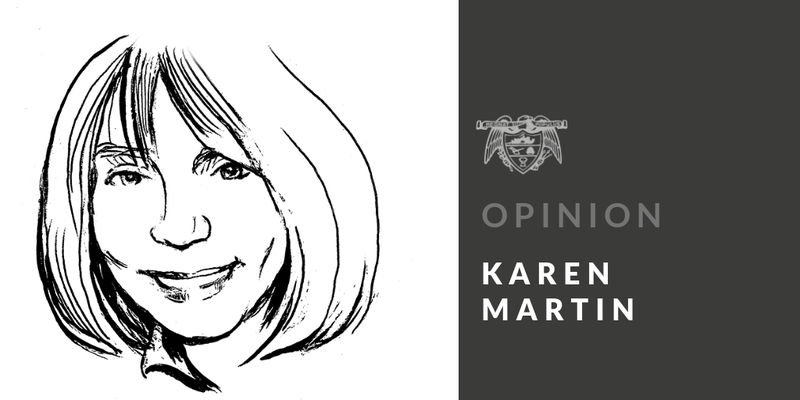BENTONVILLE --Heavy traffic on this city's Walton Avenue starts around 6:15 a.m. and roars on through 8:30 a.m. or so. A pedestrian crossing the street (with the aid of a crossing prompt and traffic light) is nevertheless furiously honked at by a guy trying to make a turn into where she's walking.
Pedestrians are wise to pay attention to drivers when they're stopped here, because so many of them are studying their phones, not the open road, and could lurch forward at any moment.
We're heading out the hotel's back door around 5:45 a.m. A toy Schnauzer voices his dominance over the grassy space when we bring our dogs Paris and Audi out for a bathroom break. The tiny dog weights 7 pounds, 8 ounces, his owner says with pride. The little guy is fearless, even at half the size of my two terriers. Dog-friendly accommodations make for good conversation starters.
After some coffee, we leave for a walk at sunrise, made more pleasant once we scuttle off noisy, congested Walton onto 28th Street and head toward Phillips Park.
After an hour, we return for the hotel's breakfast (fresh fruit, waffles, bacon, sausage, biscuits, gravy, yogurt, bagels), and more coffee. Then it's time for a shower, packing up dog supplies, and a short drive to Crystal Bridges Museum of American Art.
We're here to attend a press preview of "Architecture at Home," Crystal Bridges' first multi-structure outdoor architecture exhibition, that brings together five prototypes for homes to encourage thoughts on contemporary housing.
Five architecture firms from across the Americas have created 500-square-foot prototypes tucked into the heavily wooded edges of the museum's Orchard Trail to examine the country's current housing system. The exhibition, explains the museum's PR representatives, aims to contribute to a national conversation "by demonstrating that housing can be beautiful, attainable and connected to something innately human."
The five architecture firms participating in this exhibition--studioSUMO, MUTUO, PPAA (Perez Palacios Arquitectos Asociados), LEVENBETTS, and studio:indigenous--are led by architects from diverse backgrounds, cultures and experiences, we're told. Each surveyed the needs, challenges, and opportunities of the northwest Arkansas community to develop their designs and change ideas about how and where we build, value where we live, and consider materials, regulations, and ways to work nature into living spaces.
"We" refers to a passel of print, online, audio and TV journalists who gather routinely in this innovative arena to inspect and report on new exhibitions. There's a newcomer in the bunch, an older woman whom nobody recognizes. Turns out she happened to be walking along Orchard Trail when we embarked for our tour, and decided to join in.
"I had no idea she wasn't press," said one of our guides. "Me either," said another, "but she asked good questions."
Surrounding Fly's Eye Dome, a prototype for a lightweight and affordable home designed in 1965 by R. Buckminster Fuller, the units are open for visitors to explore for free through Nov. 7.
"The impetus for this project is the current housing reality in northwest Arkansas," curator Dylan Turk says. "My goal is to prove that affordability, beauty, and diversity in housing type can co-exist when designing, regulating and developing housing."
As we prowl in and out of the thought-provoking prototypes, a guy walking the shady paths stops to compliment Paris and Audi on their attention to the sights, sounds and smells around them. "They're urban dogs," I explain; "all this nature is fascinating to them." He then proceeds to tell me about his pit bull, who he says "has a head as big as a watermelon, with jaws to match, but is gentle as a lamb." He senses when people are evil, he explains. Luckily, he adds, "there are never any evil people in our house."
Along with our fellow journalists, museum visitors stop to fuss over the small dogs. Our head PR rep whips out her phone to show me photos of her adored dog, 10 years old, weighing about 36 pounds. "He's my life," she says. I nod, understanding what she means.
After the curator's insightful remarks and lengthy exchanges of goodbyes, we head back to the manic traffic of our home base--about three miles from Crystal Bridges; the only accommodation that's close to the museum is 21c, which is priced out of our business travel budget--to organize our evening. I was hoping to get in a swim in the hotel's indoor pool, but my key card won't let me enter, and the desk clerk's master key can't do the job either. Something about humidity, he says.
So on to relaxing. A carryout dinner from Taziki's across the street (a short, hazardous walk that demands our attention) includes lamb burger, veggie gyros, and a kid's meal called Sneaky Taziki (chicken and cheese in a griddled tortilla) for the dogs to share (hey, they're on vacation). Other nearby favorites sampled during our many visits here are Azul Tequila, Glasgow's (despite the name, it's Tex-Mex), Ramen Nara, King Burrito, and Pedaler's Pub.
No trip to this part of the city is complete without visiting Guess Who, a friendly and well-stocked liquor store. There's always something interesting on sale, and surely it will complement our dinner that's spread across the floor of our hotel room and shared with the dogs while we watch episodes of "South Park."
Despite the snarling Walton Boulevard traffic, and the need for a reasonably priced hotel near Crystal Bridges, it's easy to fall in love with Bentonville. I hope the romance lasts.
Karen Martin is senior editor of Perspective.

